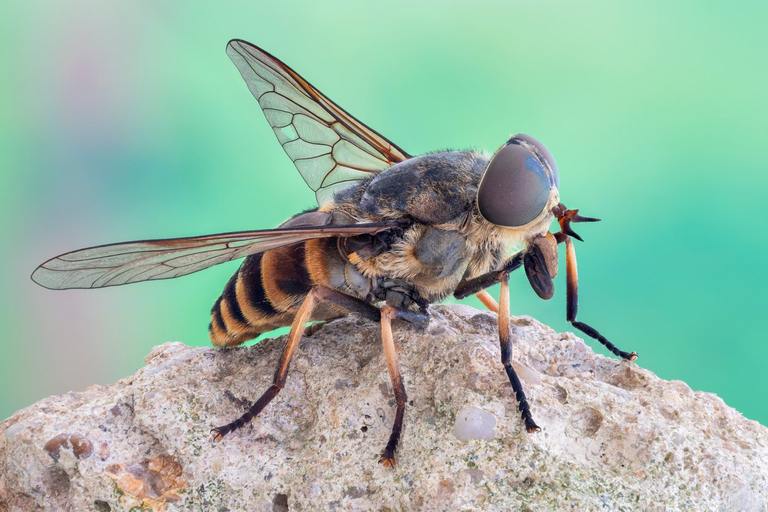Horse Fly Behaviors
Published: November 20, 2024

Horse flies are notorious pests that can cause significant discomfort to both humans and animals. Understanding their behaviors, preferred environments, and the effects of their bites is crucial for effective management and control. This article explores horse fly characteristics, behavior, habitats, and effective control measures while incorporating the latest 2025 SEO standards and relevant research insights.
Understanding Horse Flies
Horse flies belong to the family Tabanidae and are known for their large size, powerful flight, and painful bites. These insects are typically found in rural areas where livestock is present but can also be encountered in suburban settings during warm months.

Physical Characteristics
Horse flies are easily identifiable by their robust bodies, large compound eyes, and clear or patterned wings. Females are particularly aggressive as they require a blood meal to develop their eggs, whereas males primarily feed on nectar. The distinction between the two is not just behavioral but also ecological, as only the females contribute to biting nuisances.
Behavior Patterns
Horse flies are diurnal, meaning they are active during daylight hours. They rely heavily on visual cues to locate hosts and are attracted to movement, body heat, and carbon dioxide emissions from animals and humans. Their strong flying capabilities allow them to travel long distances in search of food, making them challenging to manage.
Horse flies exhibit strong host-seeking behaviors that intensify during summer months. Their persistence can disrupt outdoor activities and reduce livestock productivity.
Preferred Environments
Horse flies thrive in warm and humid conditions. They prefer environments near water sources such as rivers, lakes, or marshes, which provide ideal breeding grounds for their larvae. These wet areas support the growth of organic material that their larvae feed on.
Breeding Habits
Female horse flies lay clusters of eggs on vegetation overhanging water or damp soil. Once hatched, the larvae drop into the moist environment below, where they develop through several stages before pupating. This development period can vary based on environmental conditions, typically lasting weeks to several months.
Research conducted by the USDA Agricultural Research Service notes that horse fly larvae are voracious feeders and can thrive in decaying organic matter, which supports their development into strong, persistent adults.
Horse Fly Bites: Impact on Humans and Animals
The bite of a horse fly is not only painful but can also lead to various health issues due to its method of feeding and potential for secondary infections.
Mechanism of Biting
Unlike other biting insects that pierce the skin with needle-like mouthparts, horse flies use scissor-like mandibles to cut through flesh. This method creates a small wound from which blood pools, allowing the fly to lap it up with its sponge-like mouthparts. This mechanism is particularly painful and often leaves behind a noticeable wound.
Effects on Animals
For livestock such as horses and cattle, repeated bites from horse flies can lead to stress, reduced weight gain, or decreased milk production due to constant irritation and blood loss. In severe cases, animals may develop allergic reactions or infections at the bite sites.

Effects on Humans
Human victims often experience immediate pain followed by swelling and itching at the site of the bite. Some individuals may suffer more severe allergic reactions requiring medical attention. Although horse flies are not known major vectors of disease in the U.S., they can potentially transmit pathogens through their mouthparts when biting multiple hosts.
Preventing and Managing Horse Flies
Dealing with a horse fly infestation requires a comprehensive approach. These flies are tenacious, and simple measures are often not enough for long-term control.
Personal Protective Measures
Wearing protective clothing, applying insect repellents with DEET or permethrin, and avoiding areas with heavy fly activity during peak hours can help reduce bites. Installing physical barriers such as screens and fly traps can provide some temporary relief, but they often require routine upkeep and are rarely sufficient on their own.
Environmental Management
Removing breeding sites by managing standing water, improving drainage, and clearing vegetation can make your environment less appealing to horse flies. Encouraging the presence of natural predators, such as birds and predatory insects, may also help reduce populations. Still, in many situations, consistent and thorough monitoring is essential to ensure these methods are effective.
Professional Pest Control
While DIY efforts may offer temporary relief, long-term control of horse flies typically requires more precise and consistent solutions. Pest control professionals—especially those with specialized knowledge in seasonal fly behaviors—can address infestations at their root.
Whether protecting your property, pets, or livestock, partnering with experts ensures your space remains comfortable and safe without the stress of managing fly populations on your own.

Conclusion
The horse fly remains a persistent pest that requires awareness, preparation, and proactive management. From their distinct behavior and breeding habits to the painful effects of their bites, these insects present a real nuisance, especially in warmer, humid regions.
Understanding their lifecycle and habits, utilizing up-to-date research, and applying modern pest control practices allows for more effective prevention and relief. For the most resilient control methods, consult resources such as the University of Florida IFAS Extension, the Northwest District IFAS article, and the USDA Agricultural Research Service study.
Horse flies may never fully disappear from certain regions, but informed action and strategic interventions—particularly those supported by pest management professionals—can make all the difference. With the right expertise at your side, enjoying a fly-free environment becomes more than just possible—it becomes the norm.